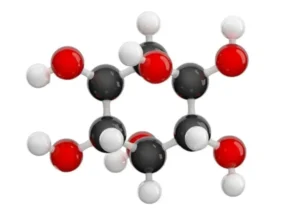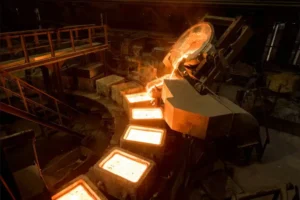In the industrial melting sector, the configuration of electric furnaces is critically important for production efficiency, استهلاك الطاقة, and return on investment.
Common setups include “one-for-one” (one medium-frequency power supply for one furnace body) و “one-for-two” (one medium-frequency power supply for two furnace bodies, typically with one melting while the other is on standby or for holding, i.e., “one melting, one preparing”).
An in-depth analysis reveals that the “one-for-two” configuration offers significant advantages in achieving continuous melting and improving transformer utilization. لكن, calculating its investment-benefit breakeven point requires a careful evaluation based on specific operational conditions.
Core Advantages of the “One-for-Two” إعدادات
The primary advantage of the “one-for-two” electric furnace configuration lies in its seamless operational flow. While one furnace body (Furnace A) is in the melting stage, the other (Furnace B) can undergo auxiliary operations such as charging, lining, preheating, holding, or tapping. Once Furnace A completes its melting and tapping cycle, the power supply can be rapidly switched to the prepared Furnace B to immediately begin the next melt. This operational model yields two major benefits.
- Enables Continuous Melting, Significantly Shortening Production Cycles: Compared to the “one-for-one” model where processes like melting, التنصت, and charging must occur sequentially, ال “one-for-two” model allows auxiliary tasks to be performed in parallel with melting. This drastically reduces downtime caused by charging and tapping, allowing the power supply to run almost uninterruptedly. Under ideal conditions, this can save nearly an entire melting cycle’s worth of time, leading to a substantial increase in output per unit of time.
- Improves Utilization of Transformers and Power Supplies: In a “one-for-one” setup, the transformer and medium-frequency power supply are idle or under a light load during non-melting phases (على سبيل المثال, الشحن, التنصت, slagging), leading to low equipment utilization. في المقابل, ال “one-for-two” configuration allows the power supply, via a power distribution system, to switch flexibly between the two furnaces or simultaneously power one for melting and the other for holding. This keeps the power supply operating in its high-efficiency range, which not only increases the transformer’s load factor and utilization but also reduces reactive power losses and helps improve the power factor, resulting in a smaller impact on the power grid.
Calculating the Investment-Benefit Breakeven Point
Although the “one-for-two” configuration has clear efficiency advantages, its initial investment is higher than that of a “one-for-one” setup, primarily due to the cost of the second furnace body and its auxiliary equipment. لذلك, the key to the decision lies in calculating the investment-benefit breakeven point—that is, determining how much time or production volume is needed to recover the additional investment through increased efficiency and cost savings.
The calculation of the investment-benefit breakeven point must consider several core variables:
- Increased Fixed Investment (ΔI): The additional capital cost of the “one-for-two” configuration compared to the “one-for-one” setup, mainly including the furnace body, hydraulic systems, أنظمة التبريد, إلخ.
- Variable Cost Savings per Unit of Production (ΔC):
- Electricity Savings: Continuous operation reduces heat loss from the furnace and minimizes energy loss from starting and stopping the power supply, generally lowering electricity consumption per ton of steel.
- Labor Cost Savings: With a significant increase in output, the labor cost allocated per unit of production may decrease.
- Other Material Savings: على سبيل المثال, a more stable melting process can lead to reduced consumption of refractory materials like furnace linings.
- Increase in Production per Unit of Time (ΔQ): This is the most significant benefit derived from the “one-for-two” model.
- Profit per Unit of Product (ص): The selling price per unit minus its variable costs.
A Simplified Breakeven Calculation Model
A simplified payback period model can be expressed as:
Payback Period=(ΔQ×P)+(Total Production×ΔC)ΔI
Where:
- ال denominator represents the total annual economic benefit of adopting the “one-for-two” model, including profits from increased output and savings from reduced unit costs.
Practical Considerations
In practice, companies need to perform precise calculations based on their specific production schedules, electricity prices, raw material costs, and product selling prices. على سبيل المثال:
- Accurate Assessment of Production Increase: This requires a detailed time log of each process in the “one-for-one” mode to compare with the theoretically saved time in the “one-for-two” mode, thereby calculating the potential increase in output.
- Estimation of Power Consumption Reduction: This can be estimated by referencing data from similar upgrade projects in the industry or through theoretical calculations based on heat balance. Typically, the electricity consumption per ton of steel can be 5% ل 10% lower, or even more, مع “one-for-two” setup.
- Matching الطلب في السوق: The increased production from a “one-for-two” configuration must be supported by corresponding market orders; otherwise, the added capacity will not translate into actual profit.
Which Configuration is Most Efficient?
From a purely operational efficiency and equipment utilization perspective, ال “one-for-two” (one melting, one preparing) configuration is undoubtedly the most efficient choice. By enabling parallel operations, it minimizes non-productive time and focuses power and equipment resources on the core melting process. It is particularly suitable for foundries and steel mills with high production demands and a pursuit of maximum output.
لكن, the highest operational efficiency does not always equate to the highest economic benefit. Decision-makers must base their choice on a precise calculation of the investment-benefit breakeven point. If a company has high production demands, sufficient orders, and a strong need for efficiency, the long-term returns of a “one-for-two” setup will likely far outweigh its initial additional investment. Conversely, if a company has a smaller production scale, unstable orders, or is highly sensitive to initial capital costs, ال “one-for-one” configuration may be the more prudent and economical choice.
Ultimately, the optimal configuration is the one that strikes the perfect balance between efficiency and investment, determined after a comprehensive evaluation of the company’s production needs, cost structure, and market environment.







